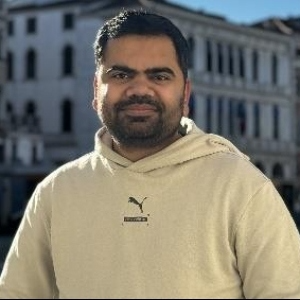Title : Interplay between Van der Waals, Kubas, and chemisorption process for hydrogen storage: A case of Sc-functionalized BeN4
Abstract:
Inspired by the recent successful synthesis of the Dirac material BeN4, the interaction of dihydrogen with pristine and Sc-functionalized BeN4 is investigated using dispersion-corrected density functional theory and ab-initio molecular dynamics simulations. The simulation results show that hydrogen molecules are physisorbed to pristine BeN4 with an adsorption energy of −0.12 eV and have low H2 uptake (∼1.3 wt%) at 100 K. Functionalization of the scandium atom on BeN4 monolayer enhances adsorption energy and desorption temperature of hydrogen molecules beyond room temperature, as calculated from abinitio molecular dynamics simulations. Using the DFT-D2 and DFT-D3 dispersion corrected DFT, we report that each Sc atom functionalized on BeN4 surface can reversibly adsorb five hydrogen molecules through Kubas interactions with an average adsorption energy of −0.53 and −0.42 eV/H2, respectively. The storage capacity of hydrogen for Sc-decorated BeN4 is 7.86 wt% at room temperature, which drops to 6% at 400 K. At 500 K, three hydrogen molecules get desorbed from the Sc-decorated BeN4, and the remaining two dissociate into isolated H-atoms, leading to irreversible hydrogen storage. The diffusion barrier for the clustering of Sc atoms is found to be 3.41 eV, calculated using the CI-NEB method. This study builds an understanding of the interaction mechanisms responsible for practically suitable hydrogen uptake in metalfunctionalized 2D nanomaterials.
Audience Takeaway Notes:
• The audience will be able to build an understanding to perform DFT simulations for energy applications. • The researchers should be able to explore other materials suitable for H2 storage.
• The researchers will be able to get a basic knowledge of computational code VASP, which they can learn and use in the research of material science.



